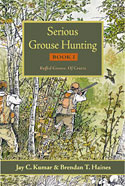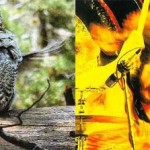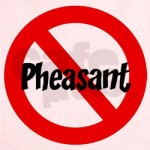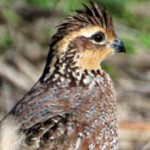MN Wants Your Grouse Comments
Well how ’bout that? Minnesota just released a draft long-term management plan for ruffies and wants your comments on it. Pretty cool considering Minnesota is one of the top grouse states in the country…meaning they want to keep it that way.
Here are some things that stood out for us:
Plan/Goals
> Among the goals of the plan are: Minnesota will remain the top ranked state for average annual harvest, at least 65% of mixed hardwood/hardwood forest types of MN DNR timberland will be in a younger forest condition.
> In 2050 (yes, 40 years from now), MN wants the number of hunters participating in ruffed grouse hunting is near historical levels, and to be a favored destination for non-resident grouse hunters. [Great! But make that 2020….]
> Forest management practices that are ecologically sound, and socially and economically beneficial to Minnesota citizens, will result in sustainable forests and
sustainable ruffed grouse populations…
>…but: A formidable array of challenges is shaping forests today: fragmentation, invasive species, climate change, disease, and changes in forest-based economics and recreation. Global competition in the forest products industry is inducing changes in the species and size of timber used by forest industries….
> Promote Ruffed Grouse Management as (RGMAs) by providing maps of their locations, improving signage within the RGMAs, and issuing media releases. RGMAs are areas of forestland where management is prescribed in a manner to benefit ruffed grouse. Planning teams will identify additional RGMAs. Increase management in RGMAs to improve bird density….
> Provide private landowners with information on ruffed grouse habitat management information and opportunities for assistance programs.
Stats
> The three to seven birds annually harvested per hunter in Minnesota are unsurpassed [nationally]. [Three to seven? Did they interview any Serious hunters?!]
> The long-term average annual harvest in Minnesota is about 545,000 birds (since 1983). Minnesota harvested over 1.2 million ruffed grouse per year when the grouse population was at or near its cyclic peak (MN DNR 2002 and MN DNR 2004). [These are crazy good numbers.]
> Ruffed grouse are Minnesota’s most popular game bird. During the last 10-year cycle of ruffed grouse abundance, an average of 115,000 hunters harvested an estimated 519,000 ruffed grouse annually. For comparison, 101,000 hunters pursued pheasants in Minnesota annually from 1998 to 2007, and the annual harvest averaged 441,000 pheasants during 1987 to 2000. There are also fewer waterfowl hunters than ruffed grouse hunters in Minnesota.
> Small game (combining grouse, pheasant, rabbits, squirrels, etc.) hunters spent over $90 million (trip and equipment) in Minnesota for their small game hunting activities during 2006. Most of these hunters were seeking ruffed grouse. This is a significant economic component for Minnesota.
> The full economic impact of grouse hunting — including license revenue, employment, and sales taxes, federal excise tax on arms and ammunition, and income taxes— is much greater.
> Aspen alone accounts for over 30% of all the trees in Minnesota. [Wow!]
Other
> ATVs are becoming more popular each year. In 2007, Minnesotans registered 263,640 recreational ATVs, up from 86,184 ten years earlier. Some grouse hunters…conclude that ATV use impacts the quality of their hunting experience. Monitoring and enforcement of OHV rules are critical.
> Seminal research in New York demonstrated that controlling predators did not increase grouse numbers (Edminister 1939). In this study, all predators were killed in one area, selectively removed from another and untreated in the third area. The test areas where predators were removed wound up actually having fewer grouse than did areas having predators.
More
> Here again is the link to the plan and survey on the MN DNR website.
Category: Habitat Conservation, MN, Ruffed Grouse




















